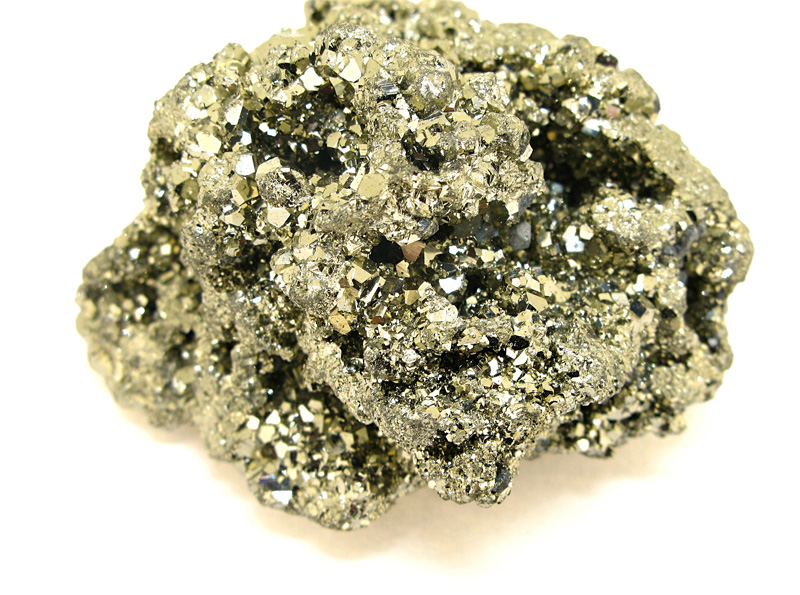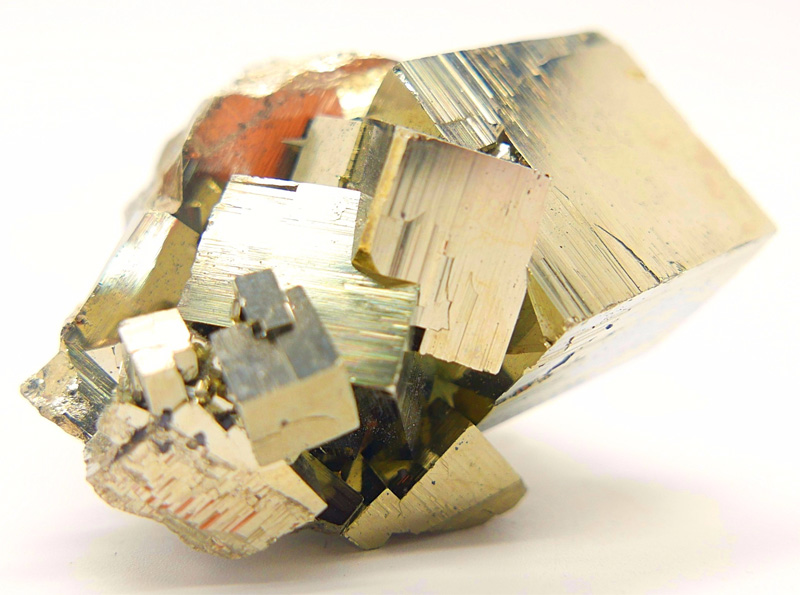

PHYSICAL PROPERTIES
- GROUP Sulfides
- COMPOSITION FeS2
- COLOR Light brass yellow
- CRYSTALLINE SYSTEM Cubic
- CRYSTALLINE HABIT Cubic, octahedral, pyritohedral
- HARDNESS 6 - 6.5
- FRACTURE Conchoidal
- EXFOLIATION Null
- GLOSS Metallic
- RAYAGreenish black to brownish black
- TRANSPARENCY Opaque
- SPECIFIC GRAVITY 5.0
MINERALOGICAL CHARACTERISTICS
The pyrite belongs to the group of sulfides and is a great source of sulfur and iron. It is usually found in large deposits of hydrothermal veins, due to magma segregation. Its name comes from the Greek "pyr" (fire), since when it is rubbed against other metals it gives off sparks. Due to its golden color it has been called "fool's gold".
The most common pyrites are those that form cubes, octahedrons and pyritohedrons (pentagonal dodecahedrons) and are usually found in massive, granular, nodular or botryoidal form. When pyrite forms spheres or rounded discs, it is called pyrite sol, and more rarely, when it presents twins of tiny crystals that form different shades of gold, violet, blue, green and silver is called rainbow pyrite.
Deposits: Spain, Bolivia, China, Chile, Peru, Great Britain, Japan, Brazil, Canada and Russia.
THERAPEUTIC PROPERTIES
The pyrite is considered a stone of protection and prosperity. Its way of crystallizing is cubic, linked to the number 4, also a symbol of matter. Pyrite promotes creativity and activates ideas, skills and potential. It is said to be a stone for good business. Increases vital energy, promotes self-esteem and self-confidence. At a healing level, it is said that pyrite is beneficial for the circulatory, respiratory and digestive systems.


